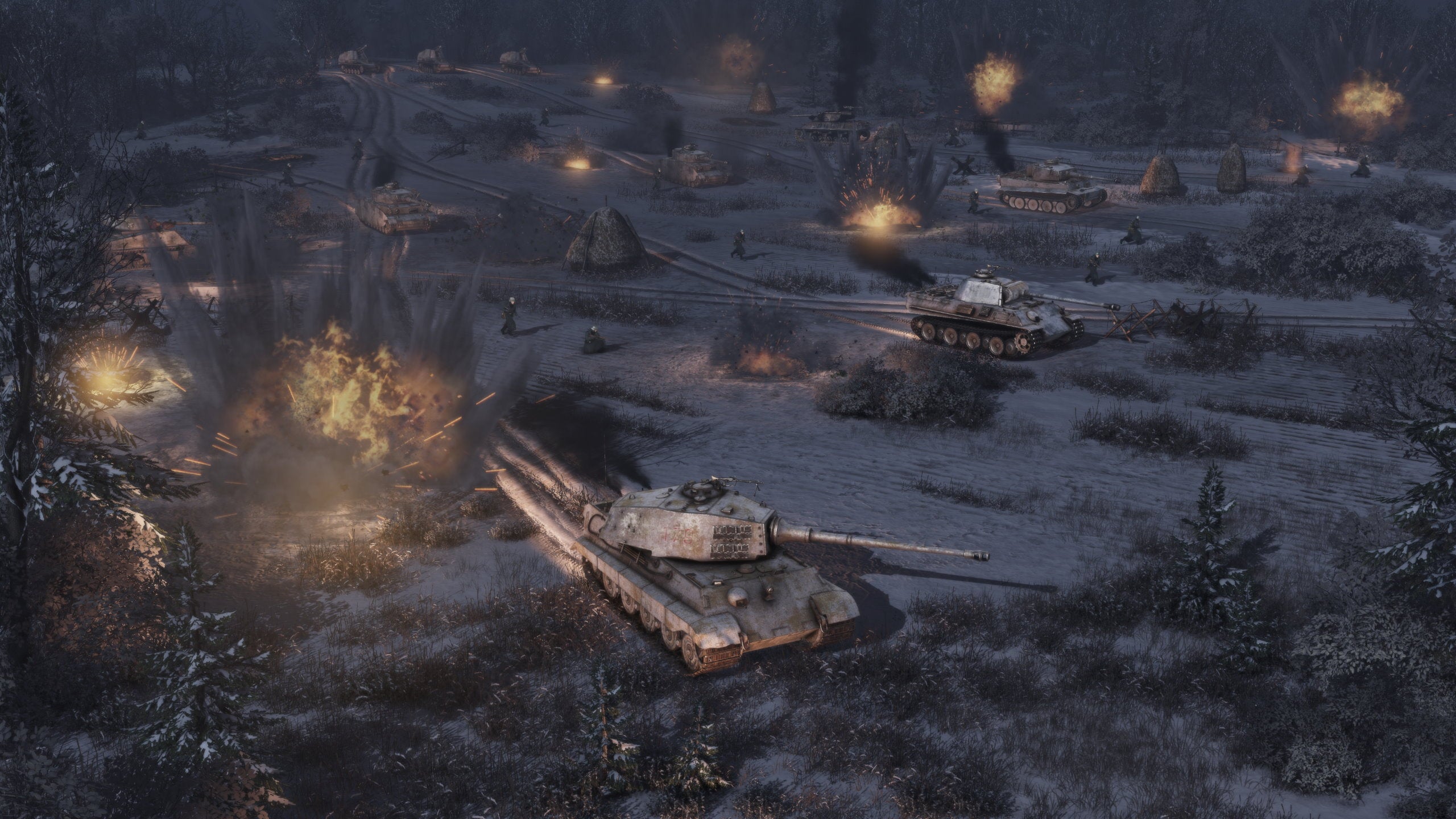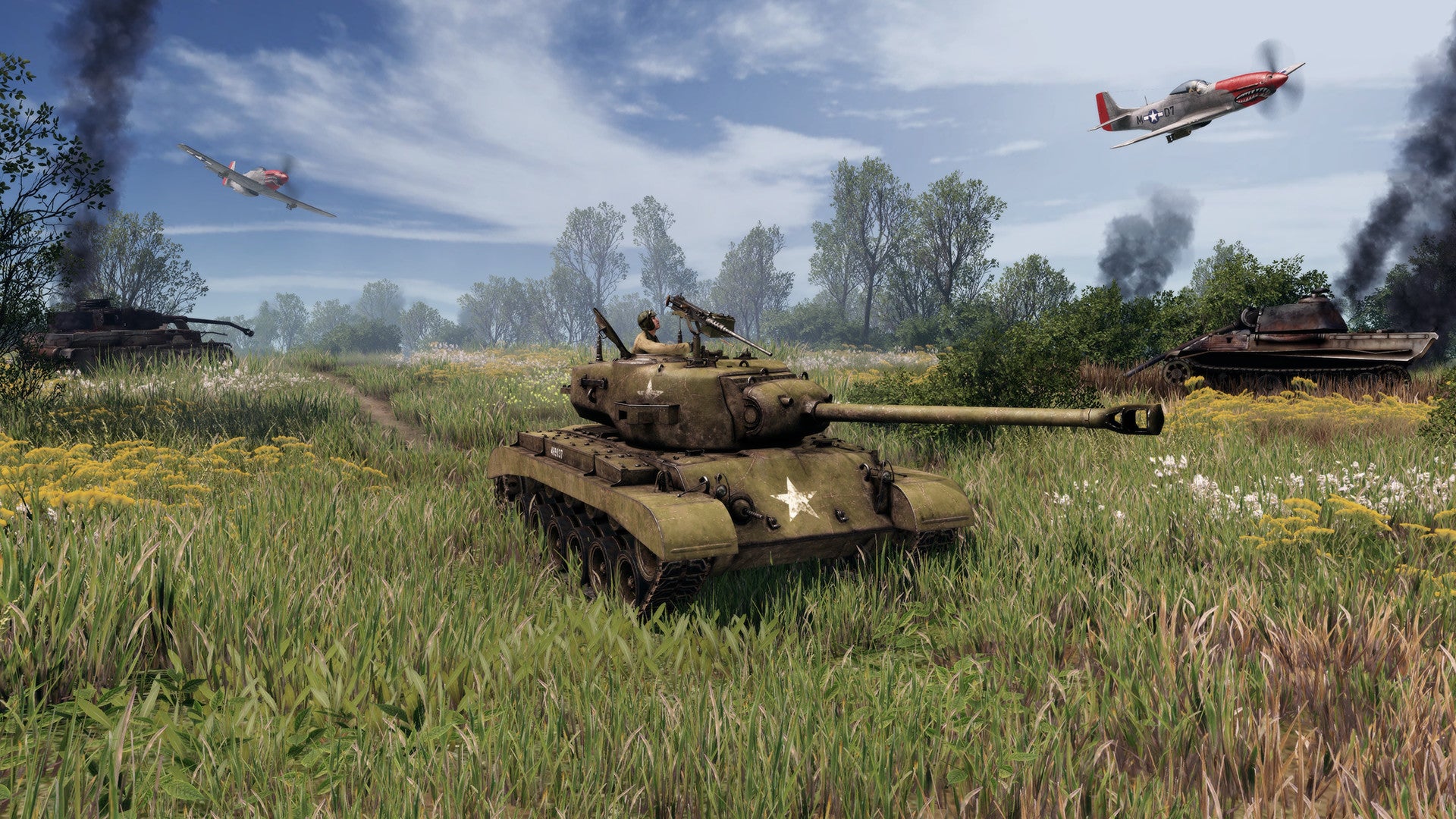But after watching and absorbing one of the game’s early missions, I can genuinely say that I’d be confident enough to give it a go when it comes out. Even perhaps, confident enough to say that I’d genuinely enjoy it quite a bit as a total newbie. What makes these particular men in Men Of War 2 so special? Well, it’s the fully-fledged sequel to the first Men Of War, which came out in 2009 and the original creators Best Way are back on development duty (and it’s just been announced that the release is delayed to next year, largely due to the Severodonetsk-based Best Way needing more time after development was stopped by the war in Ukraine). I can tell some of you want to chime in with, “I’ll have you know that there were loads of sequels!”, and I appreciate that. But these were, like, pseudo-sequels. Assault Squad 2, Men Of War: Vietnam, Men Of War Redtide; none of them had a “2” on the end, which is the magic number as far as this preview is concerned. With my slightly aggressive history lesson over, we can move on to lots of clicking on tanks. The hands-off gameplay dropped us in an early mission which saw one large group of men versus another large group of men (I don’t remember the nations, forgive me, but it’s WWII-based, so that gives you an idea). The mission was a multi-step process of advancing into enemy territory, fending off sudden tank-waves, and then ultimately overwhelming the opposition. The demoists had popped the difficulty on easy to keep things watchable and explainable, but I’m told there are plenty of difficulty options for those looking to heap on the pressure. And if you’re new, the campaign won’t just parachute you into war without any warmup at all. Men Of War 2 has a bunch of intro sequences that’ll get you up to speed with the game’s real-time wrangling. I didn’t get to see these missions in action, but I’m hopeful they’re a dummy’s introduction to the series’ returning features the “Front Line” and “Direct Control”, as well as, like, the UI itself, which holds lots of little complexities. Yet, as the demoists explained things, I understood that the frontline was determined by your ground troops, which disperse a fog of war depending on if they can push back the enemy forces or not. That line could wobble or lean heavily into one portion of the battlefield if you’d made inroads in only some small spots, but not others. As our little dudes gained ground in the demo, it struck me that I was invested in their livelihoods. The ability to directly control any of your forces helped with immersion, too. At the click of a button you can to zoom in on any unit and control them from a view that’s not first-person, but more of a close-up third-person perspective. For instance, you can control the trajectory of a mortar strike, man a light machine gun, then follow it up with a bit of a drive about in a tank. The demoists were keen to point out that it doesn’t suddenly transform you into a one-man army, as you’re still subject to the game’s authenticity. Firing mortars isn’t a simple point and click, but a lining up of crosshairs and timing things right in a mini-game-esque sequence. Tanks aren’t indestructible, and you can’t rattle off infinite ammunition like you’re some Call Of Duty super-soldier. And the vulnerability of your units creates some fantastic stories. You become invested in the little dude who rides around on his horse storming opponents with a bit too much enthusiasm. That squad nestled in the bushes? Yep, they’re on a mission to resupply a tank with shells; they’d better not die. Plus the level of detail you’re able to dig into is – I’m not even exaggerating – kind of astonishing. It feels like you’ll forever discover little nuggets of extra info on anything and everything, including strategies or units or the battlefield itself. One example of the game’s attention to detail lay in the tanks, which are vulnerable powerhouses all composed of parts that need maintaining: hull, motor, tracks, big shooty barrel. Destroy a tank’s tracks and it won’t be able to move, which means you might be able to ambush it with a bunch of units and butcher the poor driver. Maybe you could commandeer it too, if you had an engineer who could repair it. Where lots of stats and addendums might be needless complications in other RTS and RTT games, Men Of War 2 turns them into endless opportunities that are actually comprehensible for newbies like me. Genuinely, the more I saw of the game, the more it felt like a gradual unrolling of The Scroll Of Possibility. The demoists faced the might of the tanks head-on, taking control of a massive one and blasting them to smithereens. But they could’ve destroyed the bridges, rendering the tanks unable to cross the river before mortaring them from a distance. They could’ve dug trenches to block the amoured advance, or tucked units away in houses to spring a trap. Even better, the entire campaign is playable in co-op, which seems like a great way to learn the game’s intricacies with a mate in tow and discover even more angles of attack. So, as a total strategy baby I was taken by Men Of War 2. It’s an RTS with a lot of history and serious complexity, but it’s helped by systems that don’t require you to dig too deeply if you don’t want to. Opportunities abound for those who want to keep things simple or for veterans who relish micro-manage every little thing. It’s definitely shaping up to be a good time and I can’t believe I’m saying this, but I may even give it a proper whirl.


